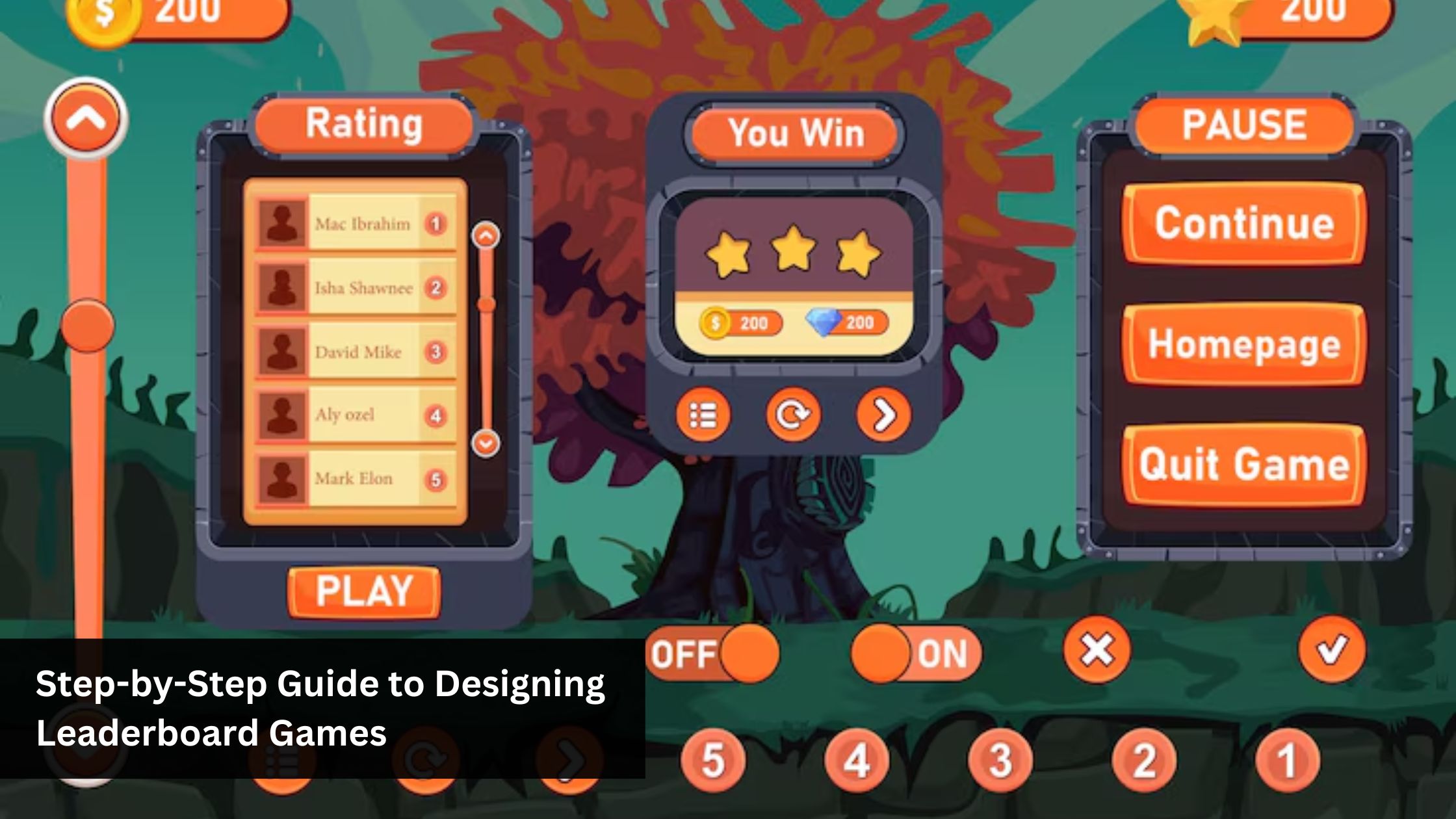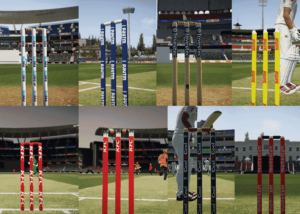
Leaderboard games have gained immense popularity across various industries, from entertainment and education to fitness and corporate training. The thrill of competing for the top spot is a powerful motivator that keeps players engaged. Designing leaderboard games requires more than just adding a scoring system—it’s about creating an experience that drives competition, encourages improvement, and fosters a sense of achievement.
This step-by-step guide will walk you through the essential components of designing effective leaderboard games that captivate your audience.
Define Your Game’s Purpose and Goals
Before designing, it’s essential to identify why you’re creating the game. What purpose will it serve? Is it for entertainment, education, or business purposes? Understanding the core goal will shape the rest of your design decisions.
- Entertainment: If the goal is pure fun, you’ll focus on engaging and competitive gameplay mechanics.
- Education: For educational purposes, your game should combine learning objectives with a sense of progression that leaderboard mechanics enhance.
- Business/Corporate Training: If your game is designed for team-building or skill training, the leaderboard should motivate employees without creating unnecessary pressure.
Example: A fitness app might use leaderboard games to encourage users to reach their weekly workout goals. The leaderboard shows who performs best and motivates users to maintain or improve their fitness level through friendly competition.
Choose the Right Type of Leaderboard
There are different leaderboards, each catering to different game dynamics and user experiences. Choosing the right kind is crucial for maintaining player interest and engagement. Here are some standard options:
- Global Leaderboards: These show all players ranked from best to worst. While this is great for large communities, it can demotivate players far behind the top scorers.
- Segmented Leaderboards: You can break leaderboards into segments based on skill level, geographic location, or other criteria. This keeps the competition within a more comparable group.
- Friend-Based Leaderboards: These focus on smaller, more personal groups, such as friends or colleagues, making the competition more relatable.
Real-Life Case Study: Popular mobile games like Candy Crush and Clash Royale use segmented and friend-based leaderboards to keep the competition fun and manageable. Players are motivated to outscore their friends without feeling overwhelmed by global rankings.
Create an Engaging Scoring System
The heart of any leaderboard game is the scoring system. To ensure fairness and competitiveness, your scoring system must reflect the skills or achievements relevant to the game. Keep these factors in mind:
- Skill vs. Luck: Players may lose interest quickly if the game involves less luck. Striking a balance between skill and chance ensures players feel they can improve and climb the leaderboard through effort.
- Frequency of Updates: Decide how often the scores update—real-time updates work well for games with short, intense rounds, while weekly updates may be better for long-term goals.
- Incentives: Consider adding bonus points for exceptional achievements or milestones. These incentives encourage players to keep trying and boost their engagement.
Example: In a language-learning app like Duolingo, players earn points based on how many lessons they complete and how few mistakes they make. The scoring system rewards consistency, practice, and accuracy, which keeps players striving for higher leaderboard positions.
Implement Rewards and Recognition
Leaderboards are effective because they tap into the desire for recognition. To keep players motivated, you must offer meaningful rewards. These don’t have to be extravagant but should give players a reason to aim for the top.
- Tangible Rewards: These could include monetary prizes, coupons, or even exclusive in-game items.
- Recognition-Based Rewards: Badges, titles, and public recognition within the game are as powerful. Players often play leaderboard games not just for the rewards but for the bragging rights.
- Milestone Achievements: Instead of focusing solely on top rankings, reward players for reaching specific milestones, such as completing certain levels or maintaining a streak.
Real-Life Case Study: Strava, a popular fitness app, uses leaderboards to foster competition. Runners and cyclists are ranked on different segments of their workouts, and the top performers are recognized as “Kings/Queens of the Mountain” for a specific route. Strava offers tangible rewards like partnerships with fitness brands and recognition-based rewards like badges, keeping users engaged long-term.
Keep the Interface User-Friendly
A great leaderboard game is about more than just the competition and the experience. Ensure your game’s interface is user-friendly, visually appealing, and intuitive. The leaderboard should be easy to access, and players should be able to understand how they’re ranked quickly.
- Clear Ranking System: Use numbers, colors, or icons to indicate player ranks clearly. A gold star for the top player or color-coded ranks can make the leaderboard more visually appealing.
- Progress Tracking: Display where a player stands and how close they are to moving up a rank. Progress bars or next-goal indicators are great for this.
- Mobile Optimization: If your game is available on mobile, ensure that the leaderboard looks good and functions smoothly on smaller screens. A cluttered or slow leaderboard can frustrate players.
Example: PUBG Mobile uses a clean, visually appealing leaderboard interface. Players can instantly see their rank, the gap between them and their competition, and their overall progress. This easy-to-navigate interface keeps players engaged and striving for higher rankings.
Consider Social Integration
Social sharing and multiplayer elements can amplify the competitive spirit of leaderboard games. Allow players to share their achievements with friends and challenge others directly. This not only adds to the fun but also boosts engagement and retention.
- Invite Friends: Include features that allow players to invite friends to join the game and compete on the leaderboard.
- Share Achievements: Let players post their rankings or milestones on social media platforms. Social bragging is a powerful motivator.
- Multiplayer Competitions: Consider adding multiplayer modes where players can compete live against their friends or other users. Real-time competition heightens the excitement and keeps users coming back.
Real-Life Case Study: Words With Friends by Zynga includes a competitive leaderboard that shows how well players rank compared to their friends. Players can easily share their victories on social media, enhancing their accomplishments and encouraging others to join the competition.
Analyze and Iterate
Designing leaderboard games takes time and effort. As players engage with your game, you must collect data, observe behaviors, and make improvements. Some features might need tweaking to balance competition or improve user satisfaction.
- Monitor Player Feedback: Regularly review player feedback on the leaderboard’s functionality, fairness, and overall satisfaction.
- Adjust Difficulty Levels: If the leaderboard seems too tricky for most players to climb, consider adjusting the scoring system or creating smaller segments to foster competition among comparable groups.
- Keep it Fresh: Update the leaderboard regularly to keep it exciting. New events, challenges, or seasonal competitions can reignite interest, especially for long-term players.
Example: Clash of Clans frequently updates its leaderboard system with new seasons, challenges, and events to keep players engaged. Keeping the competition fresh ensures players remain invested over time.
Conclusion: Designing a Competitive and Engaging Experience
Creating successful leaderboard games involves careful planning, balancing competition with fun, and maintaining a user-friendly experience. From choosing the right leaderboard type to implementing rewards and keeping the interface intuitive, each step contributes to a thriving game environment. By focusing on what motivates your players and continuously iterating based on feedback, your leaderboard game can engage and entertain for the long term.
Whether you’re designing a game for fun, education, or business purposes, the satisfaction of climbing the ranks and seeing one’s name at the top is a powerful incentive that can lead to high engagement and player retention.



